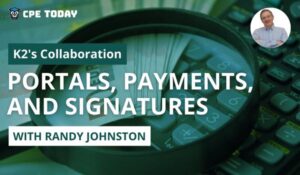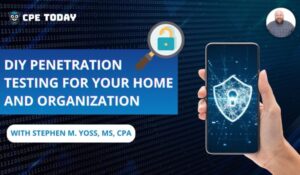
Major Topics
Learning Objectives
- Identify capital gains rates with applicable assets using the “basket” approach, cite the requirements of the home sale exclusion, and determine gain under the installment method recognizing the application of the unstated interest rules.
- Specify the types of property that qualify for a like-kind exchange and recognize the methods of identifying such property in a delayed exchange including the mechanics for such an exchange.
- Recognize the differences between recourse and nonrecourse indebtedness identifying their impact on foreclosures, determine how various types of property affect the repossession rules of ?1038 including basis and gain or loss for both installment and non-installment method sales.
- Determine how easements affect condemnations and how to report gain or loss associated with involuntary conversions, cite the types of payments included in a condemnation award, and specify the types of entities that qualify for exclusion from at-risk limits recognizing the impact of recourse and nonrecourse financing.
Course Description
Tax reform provisions have frequently changed the tax on profits realized from the disposition of real estate. This has forced investors to seek “escape hatches” from fluctuating capital gains taxes. Tax-deferred exchanges permit the disposition of property often with the taxpayer receiving significant cash but without the payment of any tax. Functionally, an exchange is a “bridge” over the normally taxable event of moving from one property to another. This course alerts the practitioner to the different planning opportunities that surround exchanging and also identifies the tax consequences of home sales, foreclosure, repossession, and other real property dispositions. Additional topics of interest include involuntary conversions and at-risk limits.
Compliance Information
Advanced Preparation
None
Field of Study
Taxes
Credits
2 Credits
Published Date
January 26, 2023
Revision Date
April 1, 2024Course Authors
Danny Santucci
Danny earned his Bachelor of Arts in Political Science from the University of California at Irvine in 1969. He received his Juris Doctorate from Boalt Hall School of Law, University of California at Berkeley in 1972, at which time he began practice as a tax attorney in Southern California. His legal career started with the business and litigation firm of Edwards, Edwards, and Ashton. Later he joined the Century City entertainment firm of Bushkin, Gaims, Gaines & Jonas working for many well-known celebrities. In 1980, Danny established the law firm of Santucci, Potter, and Leanders, in Irvine, California. With increasing lecture and writing commitments, Danny went into sole practice in 1995. His practice emphasizes business taxation, real estate law, and estate planning.
Overview
Tax reform provisions have frequently changed the tax on profits realized from the disposition of real estate. This has forced investors to seek “escape hatches” from fluctuating capital gains taxes. Tax-deferred exchanges permit the disposition of property often with the taxpayer receiving significant cash but without the payment of any tax. Functionally, an exchange is a “bridge” over the normally taxable event of moving from one property to another. This course alerts the practitioner to the different planning opportunities that surround exchanging and also identifies the tax consequences of home sales, foreclosure, repossession, and other real property dispositions. Additional topics of interest include involuntary conversions and at-risk limits.
Course Details
- Identify capital gains rates with applicable assets using the “basket” approach, cite the requirements of the home sale exclusion, and determine gain under the installment method recognizing the application of the unstated interest rules.
- Specify the types of property that qualify for a like-kind exchange and recognize the methods of identifying such property in a delayed exchange including the mechanics for such an exchange.
- Recognize the differences between recourse and nonrecourse indebtedness identifying their impact on foreclosures, determine how various types of property affect the repossession rules of ?1038 including basis and gain or loss for both installment and non-installment method sales.
- Determine how easements affect condemnations and how to report gain or loss associated with involuntary conversions, cite the types of payments included in a condemnation award, and specify the types of entities that qualify for exclusion from at-risk limits recognizing the impact of recourse and nonrecourse financing.
Intended Audience —
Advanced Preparation — None
Field of Study — Taxes
Credits — 2 Credits
IRS Program Number –
Published Date – January 26, 2023
Revision Date – April 1, 2024
Course Authors
Danny Santucci
Danny earned his Bachelor of Arts in Political Science from the University of California at Irvine in 1969. He received his Juris Doctorate from Boalt Hall School of Law, University of California at Berkeley in 1972, at which time he began practice as a tax attorney in Southern California. His legal career started with the business and litigation firm of Edwards, Edwards, and Ashton. Later he joined the Century City entertainment firm of Bushkin, Gaims, Gaines & Jonas working for many well-known celebrities. In 1980, Danny established the law firm of Santucci, Potter, and Leanders, in Irvine, California. With increasing lecture and writing commitments, Danny went into sole practice in 1995. His practice emphasizes business taxation, real estate law, and estate planning.
All of our self-study courses are NASBA approved (through our partners at K2 Enterprises) the revisions to the Statement on Standards for Continuing Professional Education (CPE) Programs (Standards).
Your Registration Includes:
- ✓ Course materials (video & PDF version)
- ✓ Unlimited attempts to complete exam
- ✓ Course materials (PDF & Sample Materials)
- ✓ Instant grading & certificate of completion
- ✓ One year access to complete your CPE
- ✓ Completion certificate



